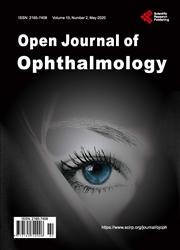Cataract Surgery in Germany: Data from a German Registry on Quality Outcomes for Cataract and Refractive Surgery in the Year 2018
引用次数: 0
Abstract
Background: The German registry for cataract surgery was established in 2014. The main aim of this registry was to improve cataract surgery outcomes. Aim: The aim of this project is to offer a tool for benchmarking through the establishment of a reference database in Germany where surgeons could record and analyze their own outcomes. Methods: Data were collected between January 2018 and December 2018. The analyzed data included parameters of surgical technique, implanted intraocular lens (IOL), refractive and visual outcomes. Results: During the year of 2018, the German registry included 10,035 lens exchange surgeries and the complete follow-up was available for 9882 lens extractions. Approximately one third of the patients were between 76 and 80 years old and 60.6% of the cases had a best-corrected distance visual acuity (CDVA) before surgery of 0.5 or better. Parabulbar anesthesia was reported in 60.4% of the cases and phacoemulsification with implantation of a posterior chamber IOL was the chosen method in 92.2% of the cases. The power of the implanted IOL was between 21.0 - 22.9D in 29.4% of eyes. Surgical complications were reported in only 413 cases. After surgery, a CDVA of 0.5 or better was achieved in 90.8% of the cases. Most of the operated patients (64%) had a residual refractive error within ±0.5D (95% confidence interval 63.2 - 65.1). Conclusions: Our results show that the registry was implementedsuccessfully with results comparable to the ones reported in EUREQUO.德国白内障手术:2018年德国白内障和屈光手术质量结果登记处的数据
背景:德国白内障手术登记于2014年建立。该登记的主要目的是改善白内障手术的结果。目的:该项目的目的是通过在德国建立一个参考数据库,为外科医生记录和分析他们自己的结果提供一个基准工具。方法:2018年1月至2018年12月收集数据。分析数据包括手术技术参数、人工晶状体(IOL)、屈光和视力。结果:2018年,德国登记包括10,035例晶状体交换手术,9882例晶状体取出的完整随访。约三分之一的患者年龄在76 - 80岁之间,60.6%的患者术前最佳矫正距离视力(CDVA)为0.5或更高。60.4%的病例采用球囊旁麻醉,92.2%的病例选择超声乳化联合后房型人工晶状体植入术。人工晶状体的度数在21.0 ~ 22.9D之间,占29.4%。手术并发症仅报告413例。术后,90.8%的病例CDVA达到0.5或更高。大多数手术患者(64%)的残余屈光不全在±0.5D以内(95%可信区间63.2 ~ 65.1)。结论:我们的结果表明,该注册表的实施是成功的,其结果与EUREQUO报告的结果相当。
本文章由计算机程序翻译,如有差异,请以英文原文为准。
求助全文
约1分钟内获得全文
求助全文

 求助内容:
求助内容: 应助结果提醒方式:
应助结果提醒方式:


